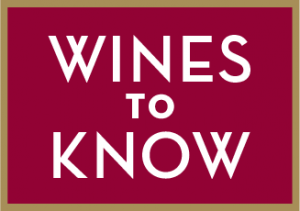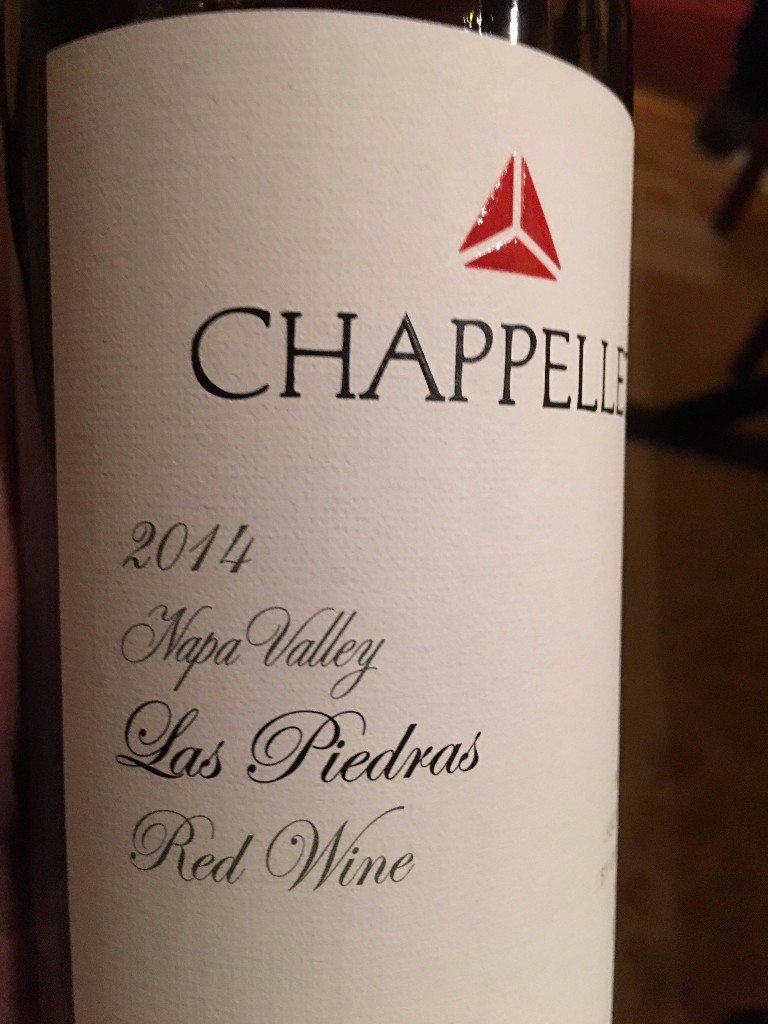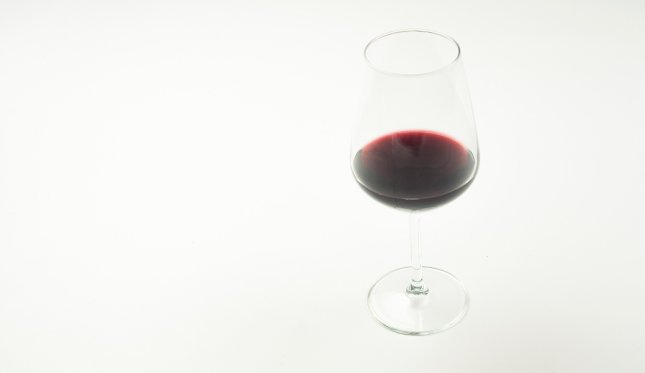
CHAPPELLET | “Las Piedras” 2014
(Napa Valley, CA) $66
 Let’s see… You need a wine gift. Maybe something impressive from the Napa Valley? Hopefully something that tastes like it costs a lot more than it does. This is your wine. Chappellet is one of the valley’s blue chip producers. “La Piedras” (The Stones) is a satiny blend of cabernet sauvignon, cabernet franc and merlot. It’s a structured, expressive wine (like many top cabs), but with an immediate deliciousness that’s off the charts. Not only can you drink it now, but it wants to be drunk now. (14.5% abv)
Let’s see… You need a wine gift. Maybe something impressive from the Napa Valley? Hopefully something that tastes like it costs a lot more than it does. This is your wine. Chappellet is one of the valley’s blue chip producers. “La Piedras” (The Stones) is a satiny blend of cabernet sauvignon, cabernet franc and merlot. It’s a structured, expressive wine (like many top cabs), but with an immediate deliciousness that’s off the charts. Not only can you drink it now, but it wants to be drunk now. (14.5% abv)
91 points KM

In Bordeaux, a second wine is:
A. a wine that is classified between the First Growths and the Third Growths.
B. a wine that is rereleased several years after the initial release.
C. a special, usually extremely expensive, wine produced by a château.
D. a wine produced by a château that is less expensive than the
château’s grand vin.
Scroll down for the answer!

Holy Vino
Of the hundreds of different sweet wines produced in Italy, the best known may be vin santo, holy wine, so named because priests have drunk it during the Mass for centuries. Vin santo is the customary finale to even the humblest Tuscan meal, served after espresso, almost always with a plate of small biscotti called cantucci, stubby, twice-baked cookies meant for dunking. Most vin santo does not taste as sweet as, say, Sauternes. The wine has a delicate, creamy, honey-roasted flavor, and the color can be unreal, from radiant amber to neon orange. True vin santo is fairly expensive because the ancient process of making it remains artisanal and labor intensive. Indeed, the grapes (generally malvasia bianca lunga or trebbiano) must be partially dried for three to six months before they are crushed and then left to ferment slowly for three to five years in small, sealed barrels in a warm attic called a vinsantaia.


“Based on chemistry, DNA, ancient texts, art, ethnography and experimental archaeology, it’s clear that as humans, we are set up as biological creatures to drink alcohol.”
of Pennsylvania, and author of Ancient Wine: The Search for the Origins of Viniculture

Racking
After a wine has “settled,” solids and bits of grape particulate matter (yeast cells and bits of grape skin) sink to the bottom of the barrel. The wine must then be racked, which means pumping or siphoning off the clear wine on top from the solids below. The clear wine is racked into a clean barrel. Racking also aerates a wine.
![]()

Syrah, Unleashed
Like the kind of guy who wears cowboy boots with a tuxedo, syrah has a certain manly-yet-classy appeal. In fact, at the turn of the 20th century, the British scholar and wine writer George Saintsbury described the famous Rhône wine Hermitage (made exclusively from syrah) as the “manliest wine” he’d ever drunk.
It’s easy to understand why. Syrah’s flavors are potent and powerful Continue Reading…

Crafty Opossum Downs Craft Spirit
According to The Drinks Business, a merry marsupial snuck into Cash’s, a Florida liquor store, the day after Thanksgiving, broke a bottle of bourbon then drank the entire contents. The brand was not revealed. Found in a wobbly condition and looking rather pale, the opossum was taken in by the Emerald Coast Wildlife Refuge and given a Bloody Mary—I mean medical fluids. She has since been released. Many animals are known to appreciate the uplifting effects of an occasional nip including elephants, shrews and fruit flies.


D. To make the best possible wine (known as the grand vin), a top château will blend together only its very finest lots of wine from the most mature and well-sited vineyard plots. What happens to all the other wine? In many cases, the château makes a second wine, which will be less expensive and will have its own brand name and its own distinct label. (A second wine has nothing to do with a Second Growth). Some of the best known second wines include Carruades de Lafite-Rothschild (from Château Lafite-Rothschild), Château Haut-Bages-Averous (from Château Lynch-Bages), Le Petit Cheval (from Château Cheval Blanc), and Les Forts de Latour (from Château Latour).
SaveSave








